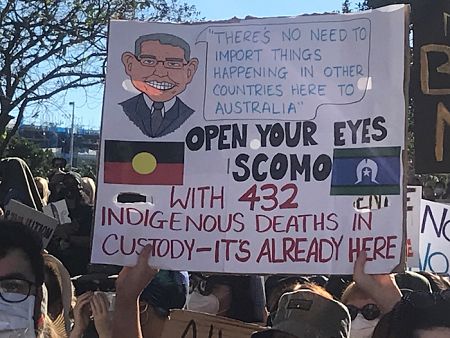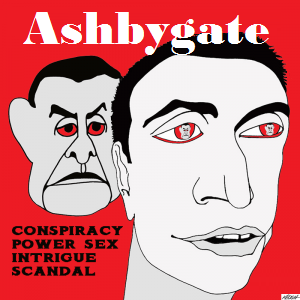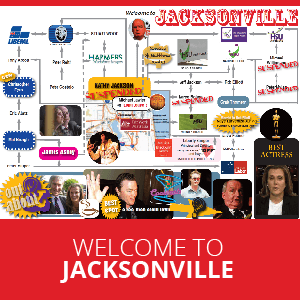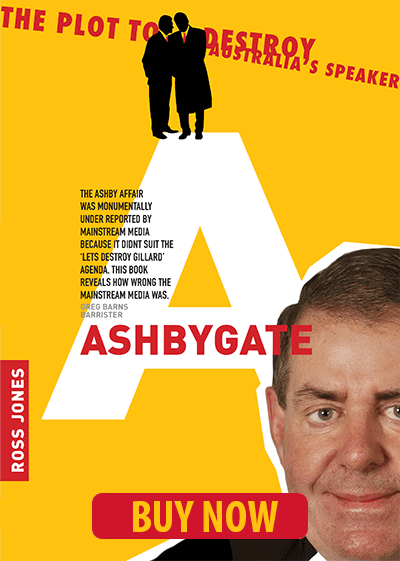Black Lives Matter demonstrations highlighting systemic racism took place across three continents despite the pandemic, following the recent death of George Floyd. John Ryan reports from the Brisbane rally.
WITH THE CURRENT pandemic situation, we did not make the decision to attend the Brisbane Black Lives Matter rally lightly.
We took every precaution — we wore facemasks and had hand sanitiser and practised social distancing from the crowd, as did many around us. When the crowd bunched up during the march, we moved back a bit to keep some distance. But we knew it was important to stand in solidarity, to show our outrage at what is happening in the U.S. and what is happening right here.
The first speaker acknowledged Asian groups, Islander groups, also any of those in solidarity with "our brother", George Floyd, or anyone with melanin in their skin:
'Say their name! Eddie Murray — say his name! Tanya Day — say her name! Elijah Doughty — say his name! TJ Hickey — say his name! Daniel Yock — say his name! Cameron Doomadgee — say his name!'
This was designed, and succeeded, to force the crowd to acknowledge the personhood of each of the individuals who have died in custody. This transformed the cold number of 434 who have died since 1991 — the date of the Royal Commission into Aboriginal Deaths in Custody.
They say justice, we say murder! The chant went up. Say their names!

The second speaker was coming up and I took the chance to speak to some international protestors behind me: four young people, two from Hong Kong, one from India and one from Malaysia. The two from Hong Kong had protested there as well. They were motivated to protest because of the George Floyd incident but were keen to learn about the plight of Indigenous Australians.
Uncle Adrian Burragubba, Wangan and Jagalingou man and spokesperson for the Wangan and Jagalingou Traditional Owners Council, spoke of a list of demands.
He was very passionate and engaging based on these 14 points:
- policing and justice system be dismantled;
- defunding of the police force with the funding going to Aboriginal communities so they can act autonomously;
- an immediate end to police brutality and racial policing practices;
- charging all police and correctional officers responsible for deaths in custody with murder and carrying the charges through to conviction;
- the reopening of the inquests and cases of all Aboriginal deaths in custody, overseen by an independent body that includes community Elders, to see justice for the families;
- amendments to the legislation to ensure all police officers must testify if they witness misconduct from another officer;
- the release of all children from youth detention;
- state and Federal governments to fund families for trauma support suffered after the loss of a family member while in custody;
- no police officer, or station, to investigate another officer for any complaint of misconduct and all future investigations to be held by an independent body that includes Aboriginal representation;
- all reported cases of racial profiling to be independently investigated and the associated officers to be stood down immediately;
- any police officer who turns off their body camera, that would otherwise be used for the purpose of an investigation of police misconduct, to be immediately stood down;
- the embedding of anti-racism training in all schools across the country and a compulsory subject for all first-year university students;
- the real implementation of all 339 recommendations from the Royal Commission into Aboriginal Deaths in Custody; and
- justice for the families of those people who have been murdered while in custody, or by racist white people.

Before moving on to the next part of the day, the march, a Smoking Ceremony was performed. This is an ancient Aboriginal custom that involves burning various native plants to produce smoke, which has cleansing properties and the ability to ward off bad spirits from the people and the land and make a pathway for a brighter future.
There followed some heart-rending personal accounts, including a tremendous recitation of a Kevin John Gilbert poem. (at the 50-minute mark in the video below).
The march wove its way through Brisbane streets and provided a chance to appreciate the full extent of the numbers. It was huge, as the pictures will testify, estimated at 30,000 people. Every so often we would all get down on one knee in solidarity – not an easy exercise – but worth it.
We finally reached Musgrave Park – an ancient meeting place – people pouring in. My story of the day ends here but the struggle continues for all those that care. On a final note, I must say that the Queensland Police were exemplary — a benign presence that marshalled traffic, everybody peacefully getting on public transport and getting safely home.
 This work is licensed under a Creative Commons Attribution-NonCommercial-NoDerivs 3.0 Australia License
This work is licensed under a Creative Commons Attribution-NonCommercial-NoDerivs 3.0 Australia License
Support independent journalism Subscribe to IA.












